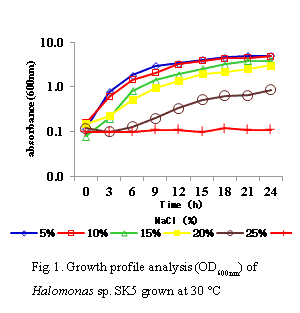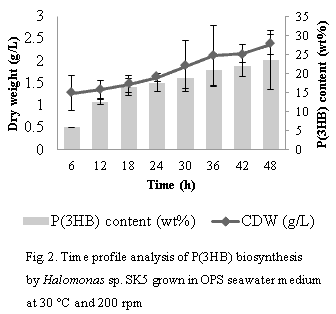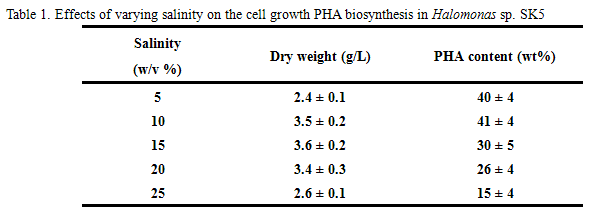Non-sterilized bio-plastic production from oil palm sap using halophilic polyhydroxyalkanoate-producing bacteria
Description
We have previously reported that we can produce polyhydroxyalkanoate (PHA), a type of bio-plastics, from oil palm sap (OPS) using PHA-producing bacteria. OPS is a good natural medium. It contains fermentable sugars such as glucose, various amino acids, vitamins, and minerals; however, it is prone to microbial contamination. To prevent microbial contamination, we developed a new PHA fermentation method in which OPS, containing salt (NaCl), is fermented by halophilic PHA-producing bacteria, Halomonas sp. SK5.
Studies on the bacterial strain’s ability to synthesize PHA were initiated by screening for the most suitable carbon source. Four carbon sources were evaluated, namely, fructose, glucose, sucrose and sodium acetate.
The results showed better growth of the bacterial strain in a medium supplemented with glucose and sucrose. We examined the optimal NaCl concentration in a medium for bacterial growth. Although the growth patterns were almost similar at 5 and 10% (w/v) salinity (Fig. 1), the best cell growth and PHA production were obtained at 10% (w/v) salinity (Table 1). Therefore, we hypothesized that it is possible to avoid microbial contamination by adding a 10% (w/v) saline solution.
We evaluated the potential of OPS in mixtures of artificial salt water and seawater as a growth and production medium. OPS was diluted (1:1) with sterile distilled water or artificial salt water. Results showed that high cell biomass (2.8 ± 0.2) and PHA content (44 ± 6 wt%) were attained (Table 2).
In addition to the utilization of OPS, the potential of natural seawater as growth medium was also evaluated. It showed no microbial contamination even in the case of using sea water. PHA accumulation utilizing mixtures of OPS and seawater showed steady increase, yielding approximately 2.4±0.2 g/L cell biomass and 24±8wt% PHA content at the end of 48h of cultivation (Fig. 2). OPS and seawater as the carbon source and culture medium, respectively, facilitated significant accumulation of PHA. This study showed the potential of OPS and seawater for use in low-cost culture medium to support bacterial cell growth and PHA production.
Figure, table
- Affiliation
-
Japan International Research Center for Agricultural Sciences Biological Resources and Post-harvest Division
- Classification
-
Administration A
- Program name
- Term of research
-
FY 2012 (FY 2011-FY 2015)
- Responsible researcher
-
Arai Takamitsu ( Biological Resources and Post-harvest Division )
MIERUKA ID: 001768Kosugi Akihiko ( Biological Resources and Post-harvest Division )
Rathi D. R. ( Universiti Sains Malaysia )
- ほか
- Publication, etc.
-
https://doi.org/10.1111/jam.12083
Rathi et al. (2012) J. Appl Microbiol.
- Japanese PDF
-
2012_22_A4_ja.pdf55.69 KB
- English PDF
-
2012_22_A4_en.pdf128.57 KB




